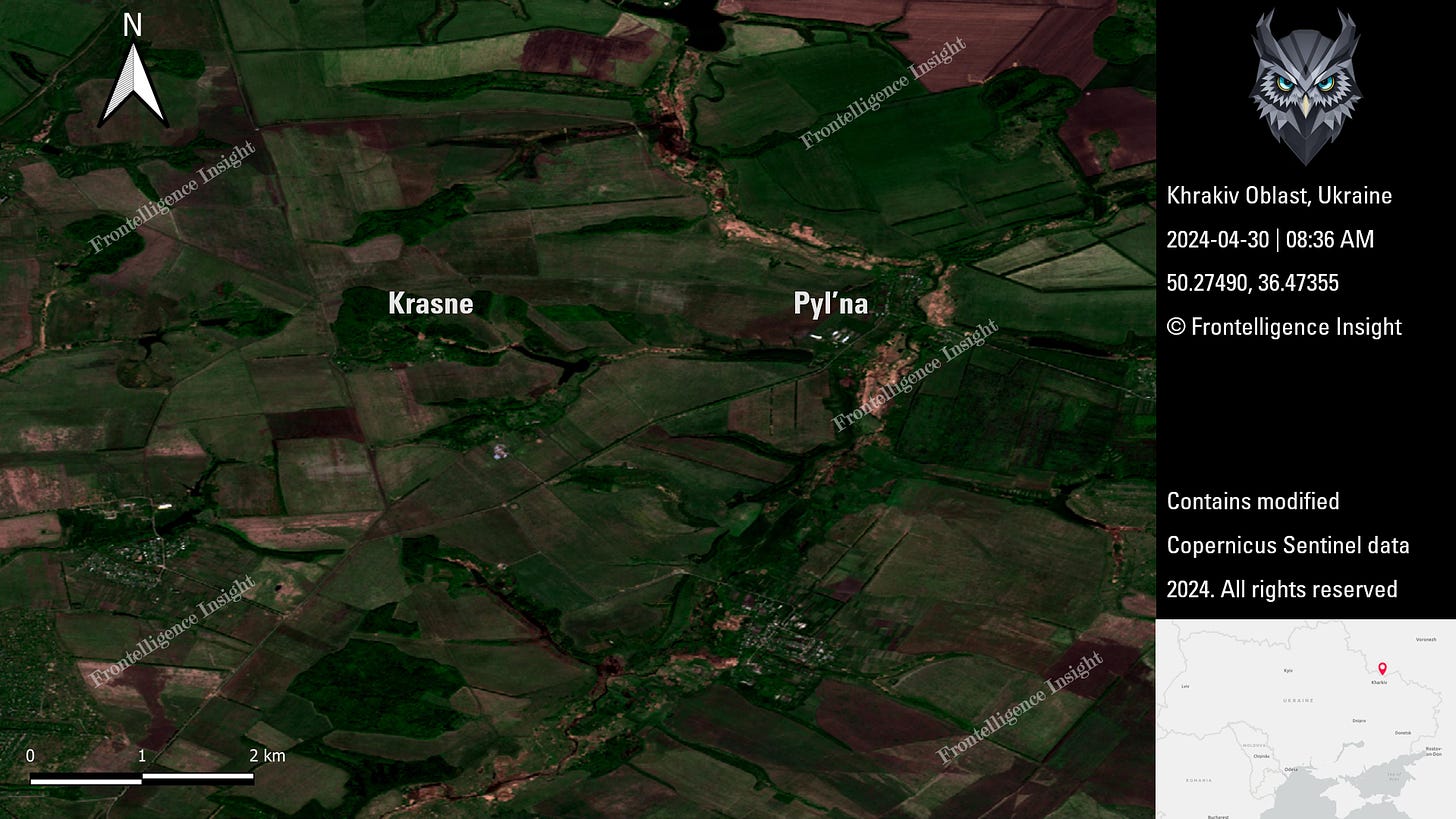While Russian intentions regarding the Kharkiv incursion remain unclear, the Ukrainian command sounds less concerned than they were over the weekend, as the threat is controlled.
Russian assaults across the front all appear to be probes to identify potential weaknesses which could then be exploited. So far, none, including Kharkiv, yet appear to rise to that level. JL
Tatarigami reports in Front Intelligence Insight:
Russian forces in the (Kharkiv oblast border) area did not form a cohesive mechanized force for a deep strike with concentrated strength to have an overwhelming superiority in personnel and equipment. Instead, they employed multiple small-scale attacks at various border points using platoon-sized and even squad-sized units. Taking Kharkiv is unlikely to be their current objective, nor do they have sufficient forces in the area for such an operation. They are leveraging their numerical advantage in units and personnel to extend the active frontline. Overall, the situation for the Ukrainian side can be characterized as controlled and stable.In the early morning of May 10th, Russian infantry, supported by armored vehicles, entered the Kharkiv oblast from the Belgorod area using small tactical units at the platoon level. Russian forces successfully entered and captured border villages such as Strilecha, Krasne, Pylne, and nearby areas. Although these areas were nominally under Ukrainian control, in reality, they functioned more like a grey zone. Our team had the opportunity to analyze footage from the area, which confirmed our previous assessments. As we mentioned in our earlier report, the Russian forces in the area did not form a cohesive mechanized force for a deep strike with concentrated strength to have an overwhelming superiority in personnel and equipment. Instead, they employed multiple small-scale attacks at various border points using platoon-sized and even squad-sized units, allowing some of them to infiltrate the border without encountering significant resistance.
Previously, the Frontelligence Insight team indicated the presence of the force equivalent to two Russian corps, spread across the Belgorod oblast. While this might seem like a substantial invasion force, not all of these troops are deployed for combat missions or to participate in assaults. The actual force allocated for entering the Kharkiv oblast is significantly smaller.
The key point to remember is that one of the main goals signaled by the Kremlin, following the failure to take Kyiv, is to seize control of Donbas. This has been a primary focus of their military efforts since the second half of 2022, indicating that taking Kharkiv is unlikely to be their current objective, nor do they have sufficient forces in the area for such an operation. Instead, they are likely leveraging their numerical advantage in units and personnel to extend the active frontline, thereby stretching Ukrainian troops thinner and forcing Ukraine to shift units away from the Donbas region.
II. Analyzing Russian AdvancementsMany have questioned how Russian forces crossed the border so quickly. The answer is simple — the border is a grey zone without troops or fortifications directly on the border line. This is primarily due to constant drone surveillance 24/7, which allows Russian artillery to target anything in that area. Therefore, it is impractical to construct fortifications directly on the border. Even if fortifications were built, Ukrainian troops would require constant manning of these trenches under constant artillery and drone threat. Instead, fortifications are positioned deeper and slightly further from the border, providing Ukrainian troops essential time to react and deploy units as needed based on the situation.
Frontelligence Insight is aware of isolated cases where small Ukrainian units have abandoned their positions; however, these incidents were isolated and have had a small impact on the overall situation. There also has been some criticism in Ukrainian social media regarding the perceived lack of fortifications. Our team has analyzed satellite imagery and determined that a system of strong defenses has indeed been constructed just slightly south of the area seized by Russian forces, hence messages about the lack of fortifications are incorrect. Claims of a collapse in defenses are premature and do not align with reality. Unlike large mechanized units, Russian lightly armored small tactical units stationed in small villages along the border can relatively easily cross into the grey zone and seize control. However, any further progress beyond this point remains highly challenging for them.
III. Short-term ProspectsUnfortunately, the Russians might have achieved partial success by compelling the Ukrainian military to redeploy units to Kharkiv oblast. Frontelligence Insight refrains from disclosing specific unit names at this time. With the Russians aiming to extend the frontline and stretch Ukrainian forces, including those from the Donbas region, Ukraine continues to face a critical shortage of personnel and readily deployable units that could serve as a rapid response force. Russian forces are deploying additional units to penetrate more border areas or to reinforce their initial successes, hence likely to attempt to build on their initial successes. Early reports from the ground, supported by videos and photos, suggest that Russian forces are sustaining significant losses but are continuing their incursion deeper into Ukrainian territory. Therefore, it is premature to draw conclusions about the ultimate outcome at this stage. Overall, the situation for the Ukrainian side can be characterized as controlled and stable.






















0 comments:
Post a Comment